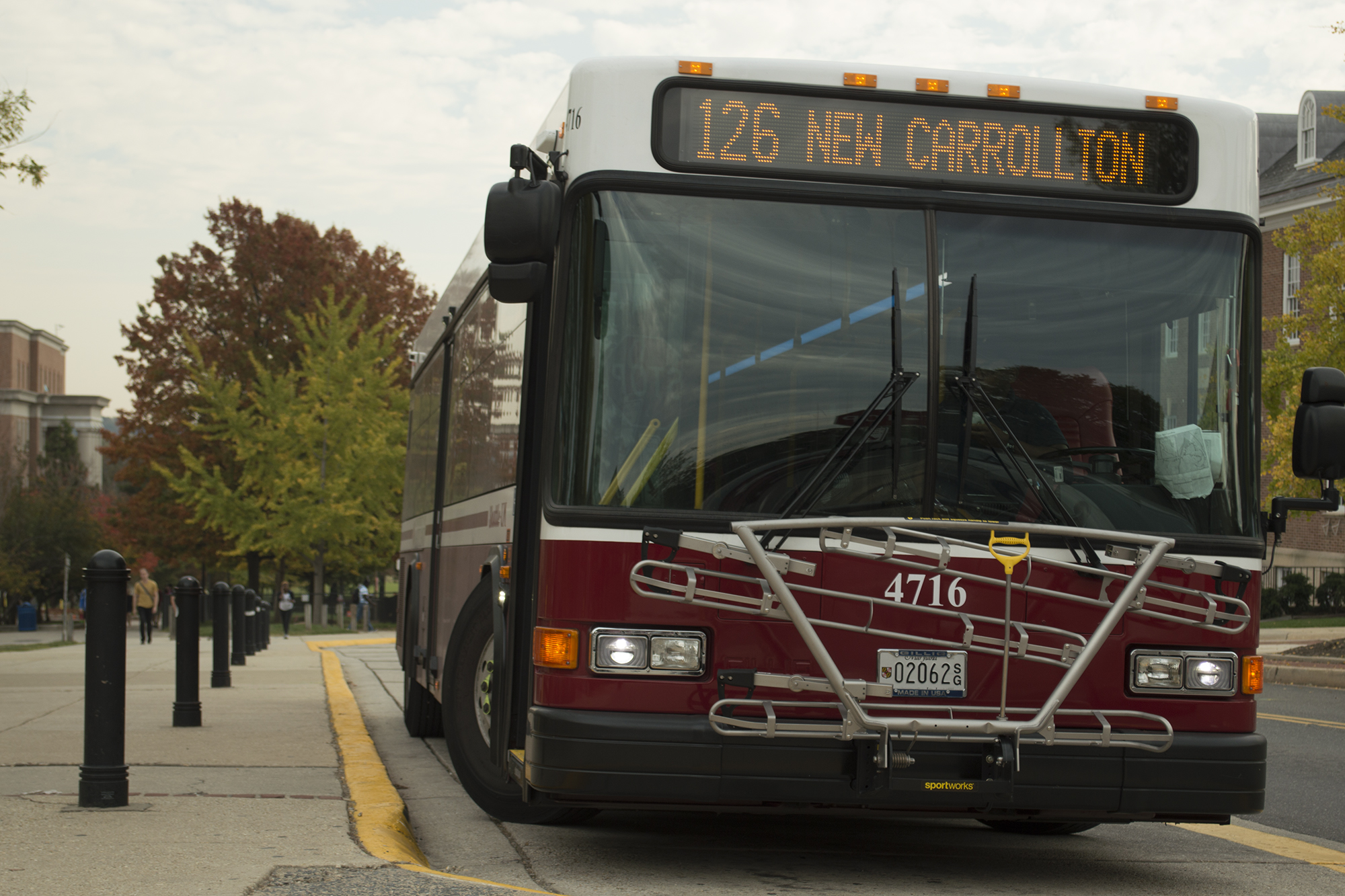By the start of the 2017-18 school year, Shuttle-UM buses at the University of Maryland will be equipped with new technology that aims to make the rider’s experience more convenient, DOTS Director David Allen said.
Half of the plan is to equip the buses with voice annunciators that tell students what stops are approaching.
“If you go on the bus, it’ll say, ‘Next stop, wherever,’ and people with visual disabilities or people not paying attention or people asleep … will know that’s the next stop,” Allen said.
The other part of the upgrade is to install passenger counters in the form of sensors placed at both doors of the bus. This would give the Department of Transportation Services more data on how many people get on at each stop, and at what time of the day. Currently, Allen said, the bus driver has to manually press a switch every time a person gets on the bus — a method he thinks is antiquated.
“What this new system will do, based on the GPS coordinates of where the bus is located, we will know how many people will get on the bus at each stop, and where,” Allen said. “We only know now how many people get on the bus per run, but we don’t know where they’re getting on. … That allows us to do a better job at identifying bus resources to where students want them to be.”
People passing the sensor for the front door will count toward the number of people getting on the bus, and similarly, people getting off the bus will trigger the sensor on the back doors.
“Besides making our system more adaptable to go where students want us to go, students won’t really know the difference or see the difference,” Allen said. “We’re just quietly counting them every time they get on and off the bus.”
Allen noted the department hasn’t purchased any of the technology yet, so much of the plan and timeline is still being worked out. But DOTS plans on having the technology in use by next fall, with most of the work on the buses occurring next summer, he said.
Overall, Allen said, the project will cost more than $500,000, but he and others think it would be worth it for the enriched transit experience it would provide to the community.
Madeline McCaslin, a sophomore government and politics major, said although she basically knows her way around the buses and around the campus by now, she sees the merits in the new technology.
“It would be really helpful for freshmen,” McCaslin said. “I know personally as a freshman, I was confused for the first couple of months with the buses and how they worked and where I should get off, so I think incorporating the technology would help ease [students] into their freshman year.”
Sophomore accounting major Lorrence Jones also said he saw the need for the new technology, citing an instance when his friends got stuck on a bus for multiple trips because they missed their stop.
“Many people will use the bus system [with the new technology],” Jones said. “I think a lot of people who don’t use the bus system or talk bad he said bad about it, it’s because they don’t really know how to get around on it. … I think if they did that, everybody would want to use the bus system because it would be convenient and easy to use.”



